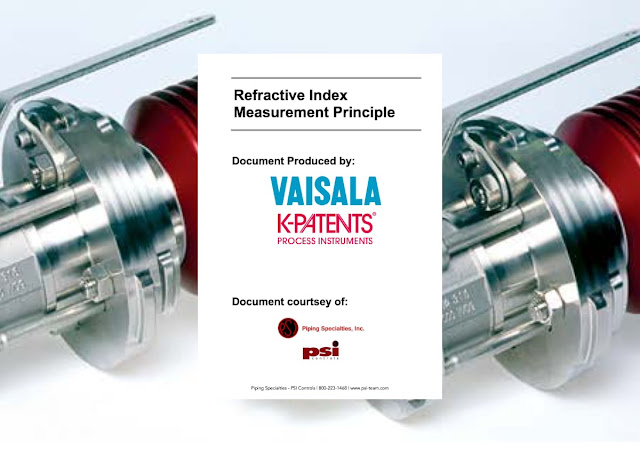In industries where precision and efficiency are paramount, Vaisala's Polaris™ process refractometers have emerged as indispensable tools for real-time liquid concentration measurement. These advanced instruments address critical challenges across various sectors, enhancing product quality, optimizing processes, and ensuring safety and security.
In the food and beverage industry, maintaining consistent product quality is essential. Traditional methods of measuring sugar content, such as manual sampling, can be time-consuming and prone to errors. Vaisala's refractometers provide inline, real-time measurements of Brix levels, enabling producers to monitor and control sugar concentrations accurately during processing. This capability not only ensures product consistency but also reduces waste and improves operational efficiency.
The chemical industry frequently handles aggressive substances, such as acids and solvents, where precise concentration measurements are essential for ensuring safety and effective process control. Vaisala's refractometers, such as the PR53W model, are designed to withstand harsh chemical environments, providing accurate, drift-free measurements. By delivering real-time data, these instruments help prevent over-concentration or dilution, which can lead to equipment corrosion or compromised product quality.
In pulp and paper manufacturing, monitoring the concentration of black liquor—a byproduct of the pulping process—is vital for energy recovery and environmental compliance. Vaisala's refractometers offer reliable measurements of black liquor solids content, enabling mills to optimize recovery boiler operations and reduce emissions. This real-time monitoring facilitates better control over the combustion process, enhancing energy efficiency and reducing operational costs.
The pharmaceutical and biotechnology sectors require stringent control over solution concentrations to ensure product efficacy and compliance with regulatory standards. Vaisala's refractometers provide precise measurements of active pharmaceutical ingredients (APIs) and other critical components during the production process. By integrating these instruments into their processes, manufacturers can achieve consistent product quality, minimize batch failures, and streamline validation procedures.
In the semiconductor industry, the purity and concentration of chemical solutions used in wafer processing are critical. Vaisala's refractometers enable real-time monitoring of these solutions, ensuring optimal conditions for etching and cleaning processes. Accurate concentration measurements help prevent defects in semiconductor devices, resulting in higher yields and lower manufacturing costs.
Vaisala's Polaris™ refractometers are not only versatile across industries but also feature robust designs suitable for various installation scenarios. Their compatibility with the Indigo 520 transmitter enables enhanced data logging, remote monitoring, and seamless integration into existing control systems. This modular approach ensures that the refractometers can be tailored to specific process requirements, providing flexibility and scalability.
Moreover, Vaisala offers comprehensive support services, including calibration, maintenance, and training, to ensure optimal performance of their refractometers throughout their lifecycle. This commitment to customer success underscores the company's dedication to delivering reliable measurement solutions that address the unique challenges of diverse industrial applications.
In summary, Vaisala's Polaris™ process refractometers effectively solve critical problems in various industries by providing accurate, real-time liquid concentration measurements. Their application leads to improved product quality, enhanced process efficiency, and increased safety, making them a valuable asset for any operation requiring precise liquid analysis.
Piping Specialties / PSI Controlshttps://psi-team.com
800-223-1468


